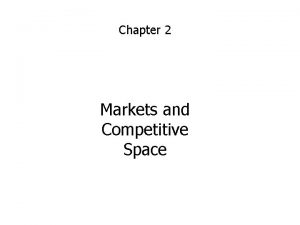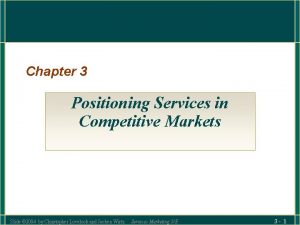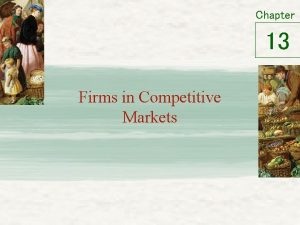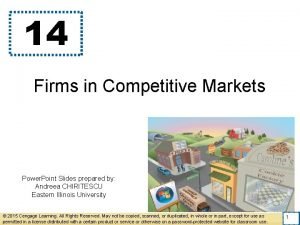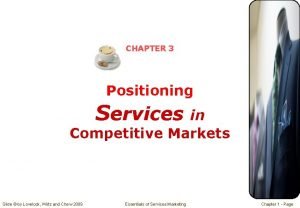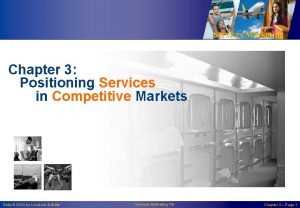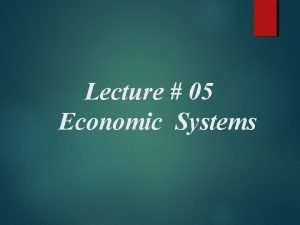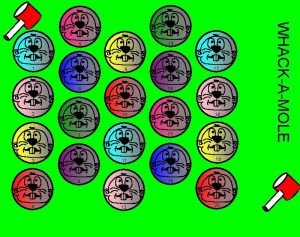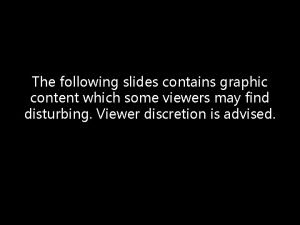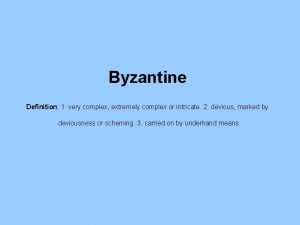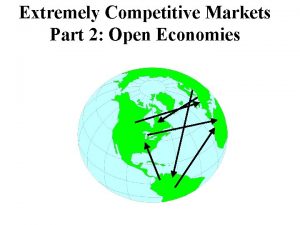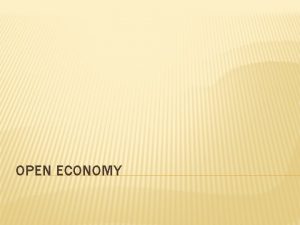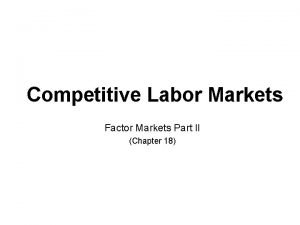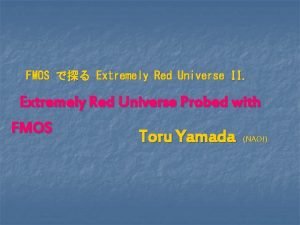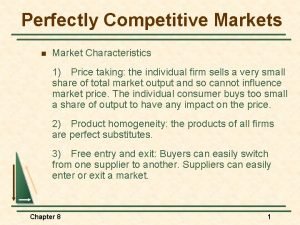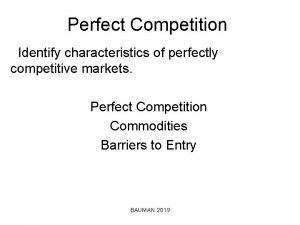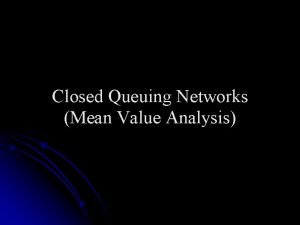Extremely Competitive Markets Part 1 Closed Economies Characteristics
















- Slides: 16

Extremely Competitive Markets Part 1: Closed Economies

Characteristics of Extremely Competitive Markets Many buyers and sellers, or “Easy” entry and exit in the presence of significant extranormal profits Little or no product differentiation Price takers

Profit Maximization for a Firm in an Extremely Competitive Market Price MC P = AR = MR 0 Qc Quantity

Why Qc is the Profit Maximizing Output Level Price MC MC(Q 2) At Q 2: MC(Q 2) > MR(Q 2) Pc P = AR = MR At Q 1: MC(Q 1) < MR(Q 1) MC(Q 1) 0 Q Qc Q 2 Quantity

The Marginal Cost Curve is the Competitive Firm’s Supply Curve Because it shows how much the firm is willing to produce at any given price Price MC P 2=MR 2 P 1=MR 1 0 Q 1 Q 2 Quantity

Measuring Profit for the Competitive Firm Price MC Profit Pc ATC P = AR = MR ATC 0 Qc Quantity

The Firm’s Short Run Supply Decision Price If P > ATC, keep producing In the longer run, at a profit If P > AVC, keep producing in the short run MC ATC AVC If P < AVC, shut down 0 Quantity


The Firm’s Short Run & Long Run Supply Curves Price The firm’s LR supply curve MC ATC AVC The firm’s SR supply curve 0 Quantity

Individual Firm and Industry Supply Firm Type A P/Q Firm Type B MCB P/Q MCA Firms Types A and B together P/Q $20 $15 $10 4 6 8 Q/t 2 3 4 6 Q/t Total Industry Supply Total industry = 50 firms type A 50 firms type B P/Q $20 $15 $10 300 400 500 600 Q/t 9 12 Q/t

Extremely Competitive Market Outcome Price Industry supply $20 $ 15 $10 Market demand 100 200 300 450 500 600 Quantity

Industry LR Supply, all firms identical Individual identical firms Industry MC $/Q AC $/Q Industry Demand LR Supply q Q/t Q=nq Q/t

Industry LR Supply, all firms not identical Individual non-identical firms P/Q MC Industry AC 2 LR Supply AC 1 D 1 q 2 Q/t Q 1 D 2 Q 2 D 3 Q/t

Strategy: What Size Plant to Build Avg. total cost ATC with small plant 0 ATC with medium plant Small plant Medium plant ATC with large plant Large plant Output/day

Strategy: Identifying Economies of Scale Average total cost Economies of scale 0 Constant Returns to scale Diseconomies of scale Output per day

Strategy: Identifying Economies of Scope Cost of producing x alone = C(x) Cost of producing y alone = C(y) Cost of producing 2 goods together = C(x, y) Economies of scope are present if: C(x, y) < C(x) + C(y) Measure or degree of economies of scope: [C(x) + C(y)] – C(x, y)
 Product-market boundaries and structure
Product-market boundaries and structure Positioning services in competitive markets
Positioning services in competitive markets Firms in competitive markets
Firms in competitive markets Firms in competitive markets chapter 14 ppt
Firms in competitive markets chapter 14 ppt Positioning services in competitive markets
Positioning services in competitive markets Basic focus strategies for services
Basic focus strategies for services The two least common competitive structures are
The two least common competitive structures are Competitive antagonist
Competitive antagonist Competitive dynamics examples
Competitive dynamics examples On delay and off delay timer symbol
On delay and off delay timer symbol Characteristics of mixed economy
Characteristics of mixed economy Oskar schell character analysis
Oskar schell character analysis Only in extremely dangerous situations
Only in extremely dangerous situations As ecological development proceeds, a biological community
As ecological development proceeds, a biological community Contains graphic content
Contains graphic content Byzantine definition
Byzantine definition Extremely
Extremely
